Election Results Offer Opportunities for Dairy Policy Improvements in Coming Year
November 16, 2016 The election last week of Donald Trump as president will usher in a new approach in Washington to issues of interest to dairy farmers, and NMPF is already engaging with the Trump transition team, as well as officials in the House and Senate, to identify paths forward on several priority issues.
The election last week of Donald Trump as president will usher in a new approach in Washington to issues of interest to dairy farmers, and NMPF is already engaging with the Trump transition team, as well as officials in the House and Senate, to identify paths forward on several priority issues.
In a statement issued last week following the historic election, NMPF President and CEO Jim Mulhern said the organization looks forward to working with the Trump Administration “on issues that will help strengthen the U.S. economy, provide regulatory clarity to those in agriculture, and expand opportunities for America’s dairy farmers.”
One of NMPF’s key priorities is to strengthen the safety net for dairy farmers. As the organization works internally to identify changes that will enhance the value of the Margin Protection Program, it will also be working on Capitol Hill to make the case that those improvements need to happen as soon as possible, and not when the current farm bill expires at the end of 2018. Other commodities within the Farm Bill may also be seeking changes in their existing programs, which could provide the impetus for action on the measure sooner rather than later.
NMPF is continuing its efforts to push for reforms in the school lunch program so that 1% flavored milk can once again be offered. If Congress fails to address the issue this month during its short end of year lame duck session, NMPF will educate incoming members of the new Congress in 2017 on the importance of reversing regulatory policies that have led to a decline in consumption of nutrient-rich milk in schools.
In the area of farm labor, while immigration was a controversial topic on the 2016 campaign trail, NMPF is pursuing opportunities to advance the organization’s workforce goals in the coming year. This includes outreach to the incoming Trump administration on dairy’s current and unique labor challenges, and how agricultural employers need access to future workers through a new visa program that will provide certainty to farmers.
Trade policy is also expected to be under the spotlight in the coming year. NMPF will be stressing the benefits to the U.S. dairy sector of access to foreign markets, as the future growth of American agriculture depends heavily on being able to reach overseas markets. NMPF will highlight how dairy exports are important both to farmers themselves, as well as to thousands of other workers in rural America whose jobs depend on a healthy and growing infrastructure for milk production, processing and marketing.
The new administration is also expected to engage in efforts to reform tax policy, which NMPF views as an opportunity to include the nutrient recovery and biogas tax credit language that was introduced earlier this year in both the House and Senate. Also in the area of environmental policy, the controversial Waters of the U.S. rule – currently held up in federal court – is not likely to be revived under a Trump Administration. [see story below]
NMPF Celebrates Centennial, Focuses on Future at Annual Meeting in Nashville
November 16, 2016 This year’s Joint Annual Meeting held a special message for dairy producers as they adapt to far-reaching changes in the economy and consumer marketplace: Unite behind a common voice and follow a clear vision to create a positive image for dairy in the future.
This year’s Joint Annual Meeting held a special message for dairy producers as they adapt to far-reaching changes in the economy and consumer marketplace: Unite behind a common voice and follow a clear vision to create a positive image for dairy in the future.
Over 850 attendees traveled to Nashville, Tenn., at the end of October to attend the event, hosted by National Milk Producers Federation, the United Dairy Industry Association and National Dairy Board. This year marked the centennial of NMPF’s founding in Chicago in 1916.
Dairy producers, processors, cooperative staff and other stakeholders heard about topics including the current dairy economic outlook, the changing perception of dietary fat, and industry partnerships with major retailers. Keynote speakers included political analyst Stu Rothenberg, author and investigative journalist Nina Teicholz and inspirational speaker Leigh Anne Tuohy, as well as dairy executives Rick Smith of Dairy Farmers of America, Chris Policinski of Land O’Lakes and Mike Haddad of Schreiber Foods.
At NMPF’s Town Hall event on November 1, Chairman Randy Mooney (top left) discussed the many important functions of NMPF, and NMPF staff shared updates on the Margin Protection Program, various trade agreements, new regulatory requirements, and farm animal care. NMPF President and CEO Jim Mulhern rounded out the day with concluding remarks on NMPF’s centennial and his vision for the organization’s future [see story below].
For this year’s annual NMPF Cheese contest, 164 entries were submitted, totaling more than 2,500 pounds of cheese – much of which was on display during the “Welcome to Nashville” cheese reception. This year's Chairman's Plaque was given to Associated Milk Producers Inc. for its Medium Cheddar, produced in Blair, Wisc. AMPI also took home the Communicator of the Year Award from NMPF’s Communications Competition.
The 2017 YC Advisory Council also elected its new Chaircouple in Nashville. Adam and Melissa Griffin will head the council in the new year. Brooks and Katie Long will serve as the Vice Chaircouple, and Ben and April Butler will serve as the Secretary Couple.
NMPF President and CEO Remarks on Organization’s Centennial at Annual Meeting
November 16, 2016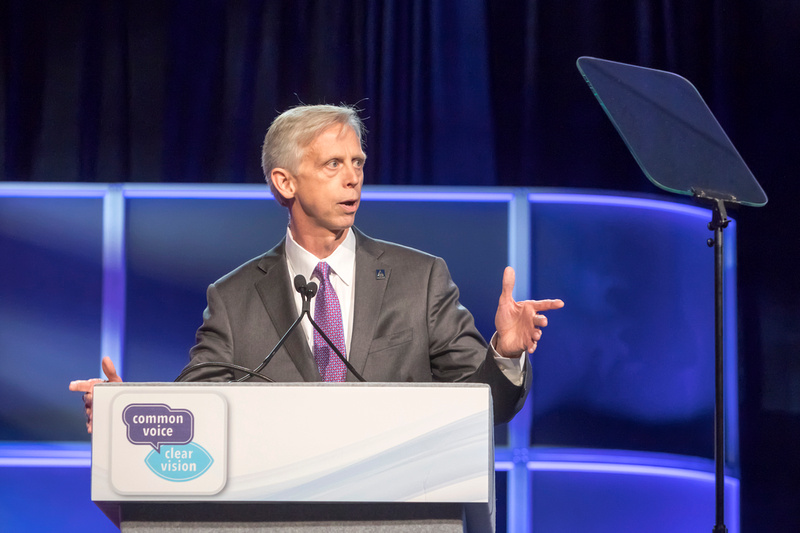 At National Milk’s 100th annual meeting, President and CEO Jim Mulhern noted the occasion by reminding attendees of NMPF’s crucial role as a strong advocate for its members in areas including expanding economic opportunities for farmers, and shaping consumer perception of farming practices.
At National Milk’s 100th annual meeting, President and CEO Jim Mulhern noted the occasion by reminding attendees of NMPF’s crucial role as a strong advocate for its members in areas including expanding economic opportunities for farmers, and shaping consumer perception of farming practices.
Speaking in front of dairy industry leaders and stakeholders in Nashville, Tenn., Mulhern said that as one of Washington’s leading agriculture policy groups, NMPF will continue its aggressive dedication to issues such as economics, trade, animal care and nutrition.
“We will speak out, we will push back, when those who don’t necessarily have your interests at heart push their agenda at our expense,” he said.
The dairy farming landscape – and the world outside of it – have changed considerably, Mulhern said, but he said changing times will not shift NMPF’s focus on priorities important to its members. These include improving the Margin Protection Program, which he said has yet to “live up to its intended potential” amid a struggling dairy economy, but is still the right program for the dairy industry’s future. Mulhern said NMPF will work with the new Congress to make necessary improvements in the primary safety net for farmers.
Mulhern also called for immigration reform to assure an adequate workforce for America’s dairy farms, and the need for dairy to seek opportunities for greater market access all over the world, including through carefully-negotiated trade agreements.
With the debate over sustainability at the forefront of many people’s minds, Mulhern discussed NMPF’s leadership efforts to bring other farm groups together in challenging Dannon USA’s pledge to source its milk from only cows that consume non-GMO feed, what he called a “fear-based marketing tactic.” The farming community must project a stronger, louder and unified voice as it dispels false marketing claims, he said. [see story below]
In the latter half of his presentation, Mulhern discussed the positive momentum behind some of NMPF’s key priorities. This includes the changing consumer perceptions on the role of fat in a healthy diet, and the success of the National Dairy FARM Program, which has expanded to also focus on antibiotic and environmental stewardship. Today, more than 98 percent of the nation’s milk supply is now covered under the program.
Mulhern said learning from the past, and analyzing consumer and economic trends, are key “to creating a brighter future for dairy.”
NMPF Leads Effort to Fight Misleading Marketing Claims by Food Companies
November 16, 2016In a strongly-worded letter sent last month to Dannon's U.S. office, NMPF and five other national farming organizations challenged the yogurt company’s misleading marketing claims about the sustainability of modern farming practices. NMPF chairman Randy Mooney signed a letter sent October 17 to Dannon CEO Mariano Lozano, rejecting Dannon’s assertion that the company’s yogurt will be more sustainably produced by eliminating the use of crop biotechnology.
The letter – also signed by leaders from the American Farm Bureau Federation, American Soybean Association, American SugarBeet Growers Association, National Corn Growers Association, and US Farmers and Ranchers Alliance – said that consumers are being misled by these specious marketing claims. The groups said there is overwhelming evidence that crop biotechnology improves sustainability by greatly reducing the environmental impact of agriculture.
The letter is the beginning of efforts by agriculture group to communicate across the food industry, including to consumers, on the value and importance of GMOs, and the need to hold food marketers accountable for a lack of truthfulness and transparency in how some companies position their ingredient sourcing practices. A week after sending the letter to Dannon, the coalition of farm groups announced plans for a “Straight Talk” initiative to engage the food sector in a dialogue on sustainable agriculture production, the marketing practices used to reach consumers, and the intersection of both trends.
In a discussion last month with reporters, NMPF Chairman Randy Mooney said that “if Dannon wants to give consumers what they describe as ‘more natural and sustainable eating options,’ then they should be cheering agriculture biotechnology, not demonizing it. Dannon should be standing on the side of science, and communicating honestly with consumers about modern food production.”
NMPF Continues Push to Hold Canada Accountable for Trade Commitments
November 16, 2016Canada’s intention to change its milk pricing policies to discourage U.S. exports continues to draw sharp opposition from NMPF, as well as other U.S. leaders concerned with looming policy changes in Canada affecting both imports and exports.
In addition to Canada’s latest proposal to restrict a range of dairy product imports from the U.S., the country has also moved forward with plans to dump skim milk powder onto global markets in excess of Canada’s international obligations under the World Trade Organization. NMPF’s objections to these behaviors have also been echoed by leaders in Congress, and more recently, by governors and state agriculture department executives.
New York Gov. Andrew Cuomo, in a letter last month to Canadian Prime Minister Justin Trudeau, wrote: “I urge you to ensure that any new Canadian program does not follow the flawed approach of seeking to solve the challenges of Canada's dairy industry by creating barriers that hamper the exports of products from New York's dairy industry.”
Wisconsin Gov. Scott Walker also publicly condemned Canada’s actions: “We know these policies violate current trade agreements and put our U.S. producers at an unfair disadvantage. Canadian friends must understand that our current and future trade relationships depend on their compliance with the agreements they've signed.”
The National Association of State Departments of Agriculture also challenged Canada’s dairy actions at the recent Tri-National Accord meeting between the U.S., Canada and Mexico, noting in its release: “These developments raise serious questions about Canada’s compliance with international trade obligations under both the WTO and NAFTA, and threaten the principles negotiated under the Trans-Pacific Partnership (TPP).”
Canada’s actions were also mentioned in NMPF’s annual joint submission (along with the U.S. Dairy Export Council) of various nontariff trade concerns to the U.S. Trade Representative’s Office last month. The filing – at almost two dozen pages – extensively details trade issues in various key export markets with the primary focus on those issues that hold the near-term potential for resolution such as unjustified nontariff barriers to trade.
CCFN Releases Study Analyzing Losses to Dairy if EU Seizes Common Food Names
November 16, 2016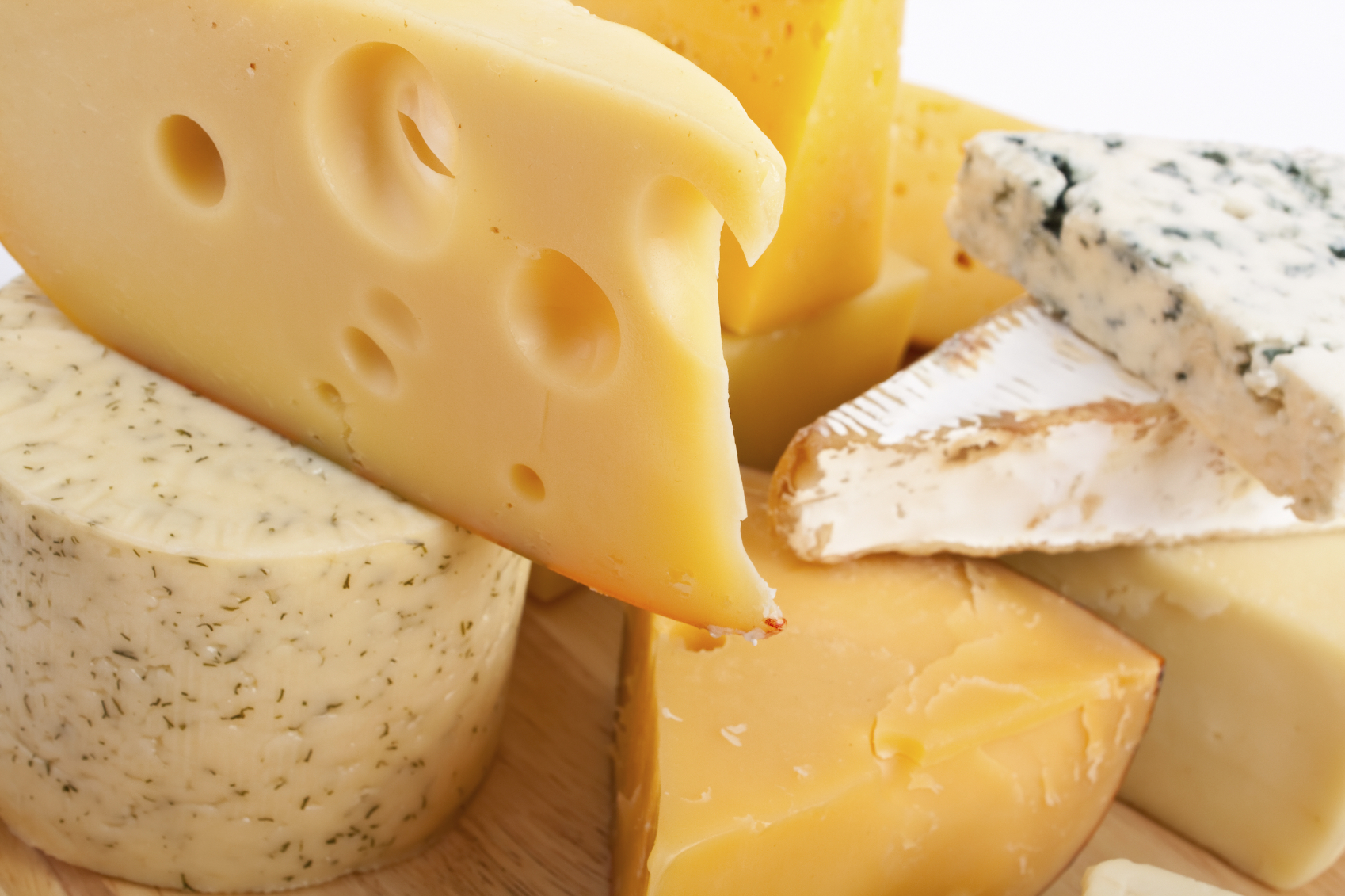 A new economic study commissioned by the Consortium for Common Food Names (CCFN) – of which NMPF is a member – has determined that a decline in U.S. cheese consumption due to the seizure of common food names by the European Union could amount to $5.2 billion in 10 years and drive a resulting cumulative farm losses of $59 billion in revenue.
A new economic study commissioned by the Consortium for Common Food Names (CCFN) – of which NMPF is a member – has determined that a decline in U.S. cheese consumption due to the seizure of common food names by the European Union could amount to $5.2 billion in 10 years and drive a resulting cumulative farm losses of $59 billion in revenue.
The analysis, conducted by Informa Economic IEG, found that imposing geographical indications restrictions on a wide range of generic terms which originated many year ago in the EU would cost the U.S. dairy industry billions of dollars, slash domestic cheese consumption and increase prices for consumers. NMPF has strongly supported CCFN’s battle to safeguard the use of common food names out of concern that restrictions on those types of terms could have severe consequences for America’s dairy farmers through reduced demand for U.S. cheeses and thereby for U.S. milk.
“The damage Europe’s GI agenda could do to the U.S. dairy industry is severe,” stated Jim Mulhern. “By 2025, our dairy farmers would lose up to 15 percent of their income and the U.S. dairy herd would shrink by up to 9 percent, or 850,000 cows. Thousands of dairy farmers would be forced out of business.”
Jaime Castaneda, NMPF’s Sr. Vice President of Strategic Initiatives and Trade Policy and CCFN’s Executive Director, noted that: “The United States must aggressively oppose the carving up of markets and refuse to bestow monopolies on a few privileged European suppliers. The use of common names by the U.S. dairy industry—and indeed all other sectors relying on typical food terms—should be aggressively preserved, both for domestic and international use.”
MPP Forecast: November
November 16, 2016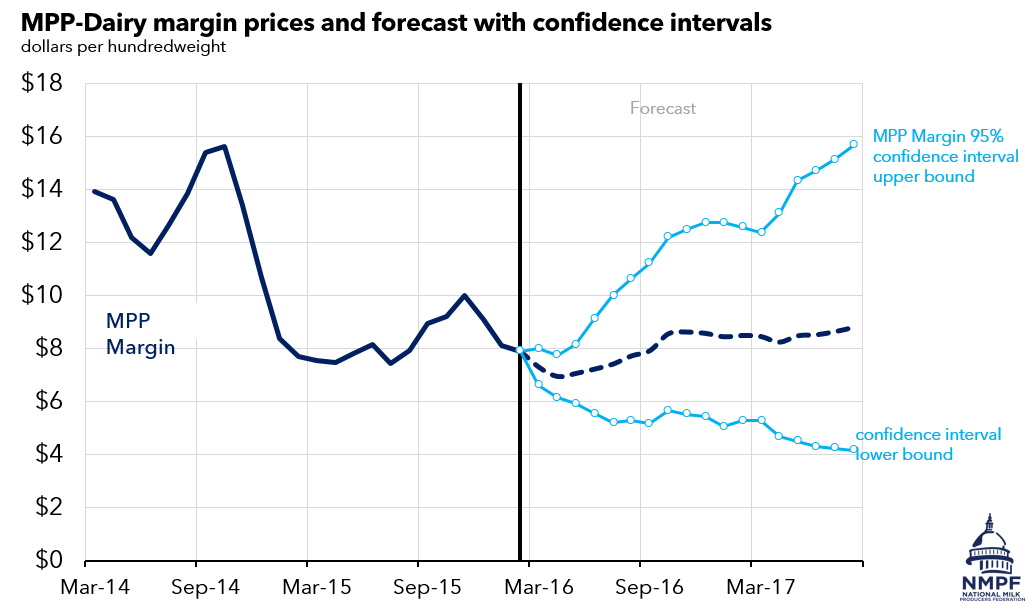
The Margin Protection Program (MPP) margin for the July-August period rebounded to $8.43 per hundredweight from the $5.76 per cwt. rate announced for the May-June period. The May-June level was the lowest bimonthly MPP margin since the program began two years ago. USDA’s MPP decision tool is projecting no probability that the margin will be less than $8 per hundredweight during the remainder of 2016, and a 10 percent probability that this will happen during calendar year 2017. USDA’s MPP margin forecasts are updated daily online.
Dairy farmers have from now until Dec. 16 to enroll in MPP for coverage in 2017 or to change their coverage level if they are already participating in MPP. NMPF’s Future for Dairy website offers a variety of educational resources to help farmers select the desired coverage level.
October CWT-Assisted Member Export Sales Contracts Total 7.8 Million Pounds of Dairy Products
November 16, 2016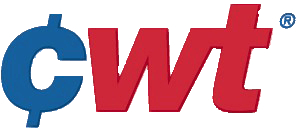 Cooperatives Working Together assisted member cooperatives in October in winning 48 contracts to export 5.44 million pounds of American-type cheeses and 2.39 million pounds of butter. The products will go to customers in Asia, the Middle East, North Africa and Oceania, and will be shipped from October 2016 through January 2017.
Cooperatives Working Together assisted member cooperatives in October in winning 48 contracts to export 5.44 million pounds of American-type cheeses and 2.39 million pounds of butter. The products will go to customers in Asia, the Middle East, North Africa and Oceania, and will be shipped from October 2016 through January 2017.
CWT assisted members in getting exports sales contracts totaling 44.19 million pounds of American-type cheese, 10.98 million pounds of butter (82% milkfat) and 19.1 million pounds of whole milk powder going to customers in 24 countries on five continents. The sales are the equivalent of 794.32 million pounds of milk on a milkfat basis. Totals are adjusted for cancellations received during the month.
Assisting CWT member cooperatives gain and maintain world market share through the Export Assistance program in the long-term expands the demand for U.S. dairy products and the U.S. farm milk that produces them. This increases demand, which positively affects all U.S. dairy farmers by strengthening and maintaining the value of dairy products that directly impact their milk prices.
The amounts of dairy products and related milk volumes reflect current contracts for delivery, not completed export volumes. CWT will pay export assistance to the bidders only when export and delivery of the product is verified by the submission of the required documentation.
USDA Begins Work on Bioengineered Food Standard
November 16, 2016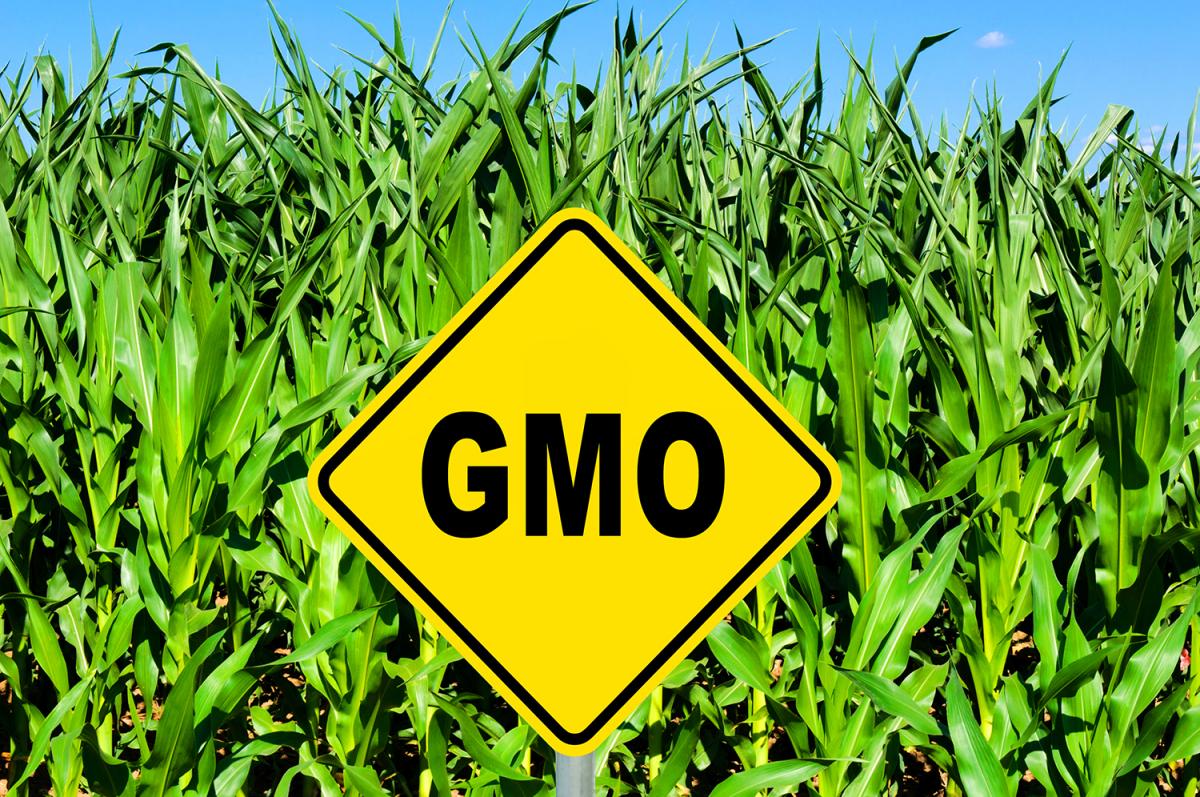 The U.S. Department of Agriculture has started work on the required regulations for a mandatory labeling system for foods produced using biotechnology, following legislation passed into law in July.
The U.S. Department of Agriculture has started work on the required regulations for a mandatory labeling system for foods produced using biotechnology, following legislation passed into law in July.
The new law directs USDA to create a standard for food manufacturers to disclose whether a food contains GMO material via an on-package label, a quick reader code, or by other means. USDA has two years to develop the rule, which means it must be issued by July 30, 2018.
USDA plans to issue an Advanced Notice of Proposed Rulemaking (ANPR) in November on the matter, and hold public meetings around the country in the months ahead. The ANPR should give the dairy community and other stakeholders insight into the issues USDA plans to address in rulemaking.
NMPF will continue to actively engage in the rulemaking process just as it did during the legislative process. Issues of focus include how will absence claims be regulated and by whom; what are the de minimis levels of bioengineered material that do not trigger a need for disclosure; how will cultures, enzymes and processing aids be regulated under the standard; and how will USDA prevent disparagement against foods produced using biotechnology.
WOTUS Rule Faces Cloudy Future
November 16, 2016 The Environmental Protection Agency (EPA) pursued a highly-politicized approach to implementing its controversial Waters of the U.S. regulation updating the Clean Water Act, according to a congressional report issued last month. That report, coupled with the anticipated change in management of the EPA under the new Trump Administration, is likely to result in the demise of the highly-contested WOTUS rule.
The Environmental Protection Agency (EPA) pursued a highly-politicized approach to implementing its controversial Waters of the U.S. regulation updating the Clean Water Act, according to a congressional report issued last month. That report, coupled with the anticipated change in management of the EPA under the new Trump Administration, is likely to result in the demise of the highly-contested WOTUS rule.
The Clean Water Act (CWA) of 1972 gave the federal government limited jurisdiction over certain navigable waters. What constitutes “navigable waters” has been a controversial question since the EPA began pushing the WOTUS regulation, and that uncertainty has been costly and problematic to those in agriculture, and others affected by the regulation.
NMPF advocated for retraction of the EPA proposal if necessary clarifications to make this rule work for farmers and their operations could not be implemented. The Obama Administration issued a revised Waters of the U.S. (WOTUS) rule last year, which significantly increased the federal government’s jurisdiction under the Clean Water Act, and failed to address NMPF’s concerns. This expansion also generated numerous lawsuits, including a nationwide stay of further enforcement that remains in effect.
NMPF Pushes Back on FDA’s Efforts to Limit Sodium in Foods, Including Cheese
November 16, 2016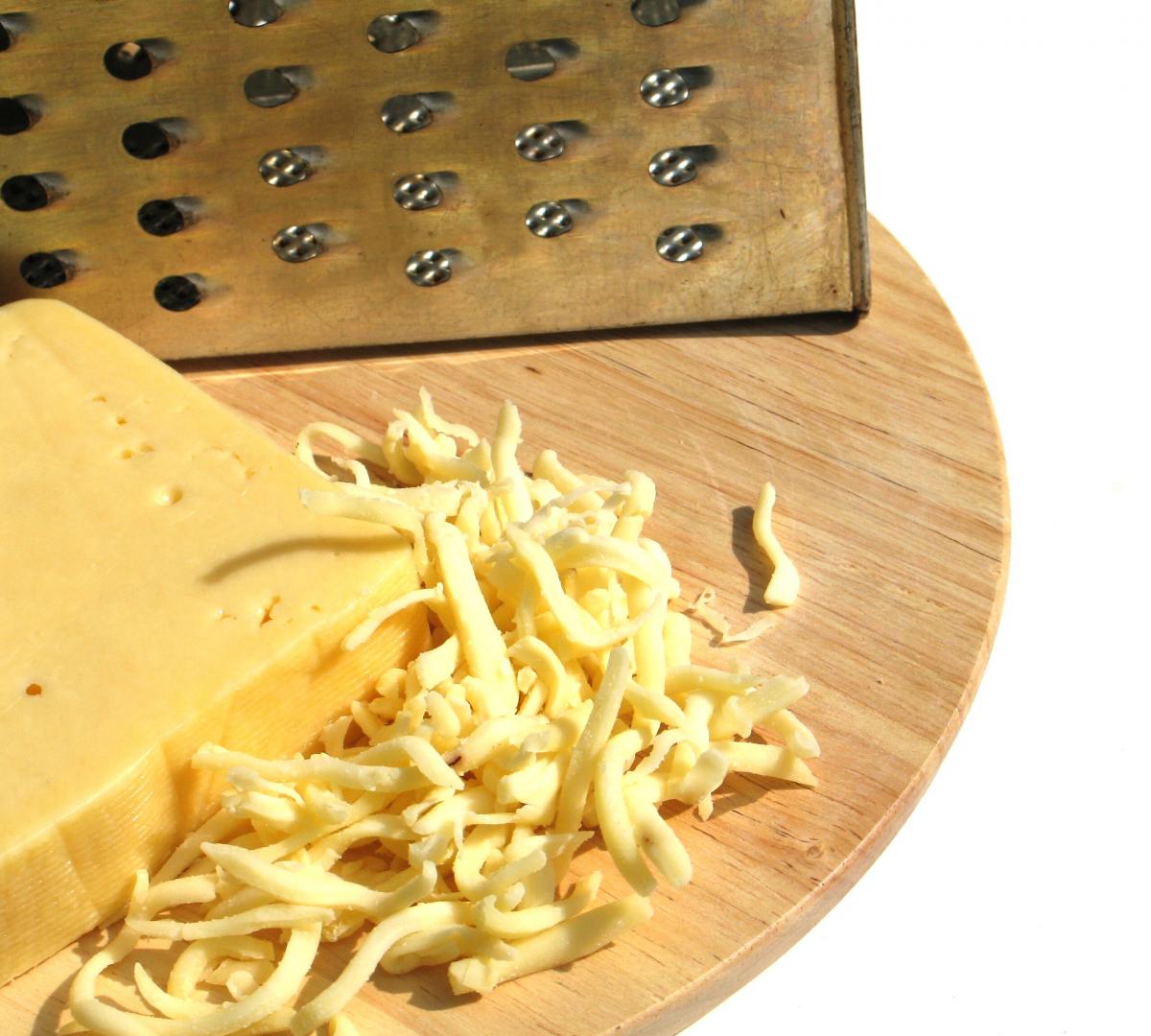 Efforts by the Food and Drug Admiration to advocate a one-third reduction of the sodium content of cheese drew strong opposition last month from NMPF.
Efforts by the Food and Drug Admiration to advocate a one-third reduction of the sodium content of cheese drew strong opposition last month from NMPF.
NMPF submitted comments in October to a U.S. Food and Drug Administration (FDA) draft guidance recommending the estimated average U.S. sodium intake of 3,400 mg per day be reduced to 2,300 mg per day over the next 10 years. NMPF has emphasized the complex role of sodium in cheese quality, functionality, and safety, and suggested FDA drop its proposal to include cheese in its sodium reduction efforts.
The guidance, titled “Voluntary Sodium Reduction Goals: Target Mean and Upper Bound Concentrations for Sodium in Commercially Processed, Packaged, and Prepared Foods,” included sodium reduction targets for a number of processed foods, including cheese and other dairy foods.
NMPF was joined by the International Dairy Foods Association (IDFA) in challenging the proposed short-term sodium reduction targets.
“Overall, after much discussion and consultation with our members and dairy foods experts, NMPF and IDFA encourage FDA in the strongest way possible to remove the entire cheese category from the sodium reduction guidance,” the comments said. “Salt plays a crucial role in the manufacture and ripening of natural and processed cheeses and impacts overall product functionality, safety, and quality.”
In a parallel effort focused on FDA sodium guidelines, NMPF suggested that FDA had overlooked two potential food categories for sodium reduction: imitation dairy beverages (e.g., soy beverage) and imitation dairy products (e.g., soy cheese, rice yogurt).
“Unlike with milk, where sodium is naturally-occurring, sodium is added to imitation dairy beverages and imitation dairy foods for taste, and in amounts greater than what is needed for microbial safety and product stability,” according to the comments.
Producer Input Sought for 2016 National Beef Quality Audit
November 16, 2016Beef producers from every segment of the industry – including dairy beef – are being encouraged to participate in a survey that will help establish a benchmark and course for the beef industry for 2017 and beyond. To access the survey, visit the Beef Quality Assurance website. The deadline is Nov. 18.
The Producer Survey of the checkoff-funded 2016 National Beef Quality Audit (NBQA) will collect information and opinions, which will help form an in-depth look at where the industry stands, as well as its successes and shortcomings.
The survey is completely anonymous and includes both information about the industry's cattle operations and the opinions of the people who run them about the strengths and weaknesses of the industry. First performed in 1991 and conducted every five years since then, the beef quality audit has provided the industry a meaningful set of guideposts and measurements about the U.S. beef supply.
First FARM Evaluator Conference Draws Robust Attendance
November 16, 2016 The first annual FARM Program Evaluator Conference, held after NMPF’s annual meeting earlier this month, drew strong turnout from more than 60 evaluators representing the majority of companies participating in the National Dairy FARM Program.
The first annual FARM Program Evaluator Conference, held after NMPF’s annual meeting earlier this month, drew strong turnout from more than 60 evaluators representing the majority of companies participating in the National Dairy FARM Program.
The event, held November 2-3 in Nashville, was sponsored by Elanco, Merck Animal Health and Zoetis. The keynote presentation was delivered by Amanda Kent, an expert in “Life Hacks,” who shared insights into how those in the audience can reach their leadership potential, especially when sharing the FARM Program message with all industry stakeholders.
Following the keynote address, two panels consisting of current FARM Program evaluators and members of the Technical Writing Group shared their insights on how to assist farms through upcoming changes, such as the elimination of tail docking and the expanded role of veterinarians in the program. The first day concluded with communications consultant David Pelzer outlining how FARM plays a critical role in crisis management in the dairy community.
The second day of the conference focused on the future of the FARM Program. Dr. Michael Lormore with Zoetis presented on the necessity of continued judicious antibiotic stewardship within the industry. Dr. Cassandra Tucker and Dr. Nina Von Keyserlingk also provided insight on the latest animal welfare and consumer-focused research. Each of these presentations generated ideas within the evaluator attendees that were shared in a group discussion about how the FARM Program can continually improve and evolve.
At the conclusion of the conference, a group of attendees also took advantage of a Stockmanship Training workshop offered by the Beef Quality Assurance Program at Middle Tennessee State’s Research and Education Center. Flight zones, points of balance and the importance of calm animal handling were reinforced throughout the training, and gave attendees a variety of resources that can be shared with their producer members.
FARM Program Version 3.0 Online Evaluator Training Available
November 16, 2016The FARM Animal Care Program Version 3.0 online evaluator training is now available for any individual who would like to certify or re-certify to perform Version 3.0 Animal Care evaluations.
The program can be accessed at www.aglearning.com by clicking on the green tab at the top of the page labeled Public Course Offerings. Next, scroll down the page to the course labeled Second-Party Evaluator, submit a payment, and the training will then begin. After the course concludes, evaluators must take the exam and pass with at least an 80% score to be considered a Version 3.0 FARM Animal Care evaluator.





